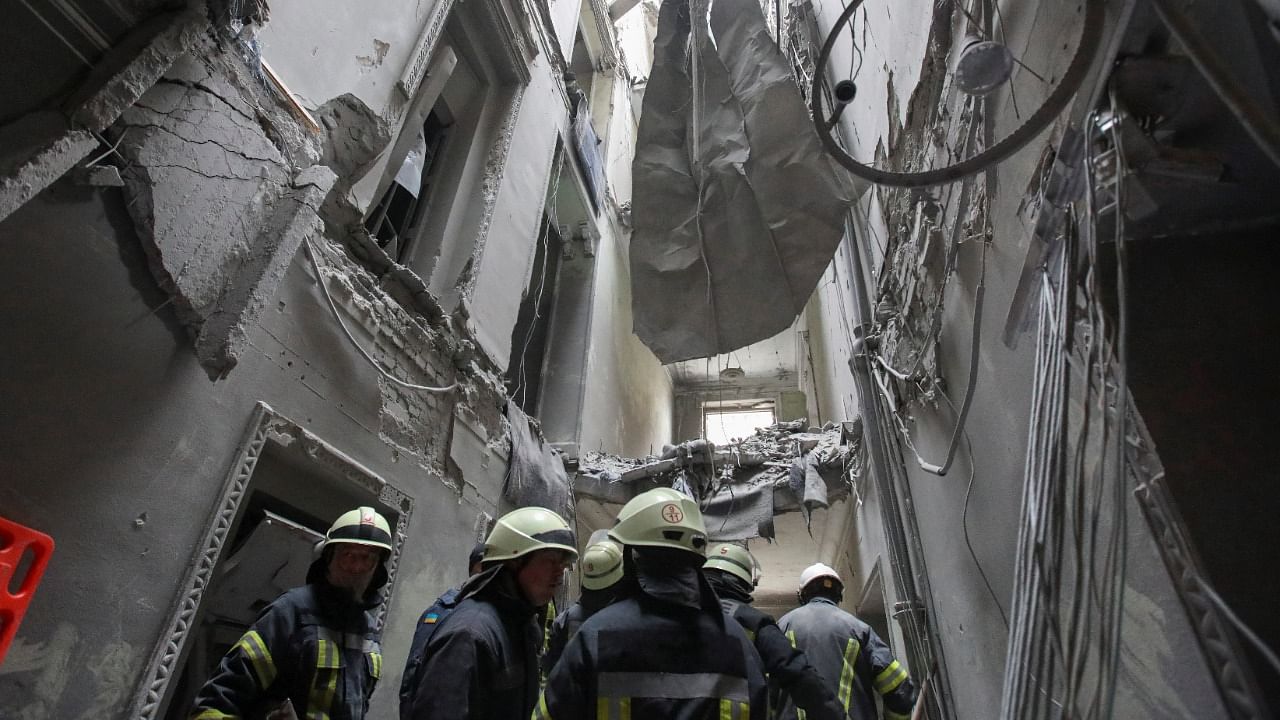
Ukraine has alleged that Russia has used thermobaric weapons, commonly called "vacuum bombs", during the ongoing war between the two countries.
A Russian-language account on the Telegram messaging app identified what open-source analysts said appeared to be a Russian TOS-1A thermobaric multiple launch rocket system on a road between Kyiv and the town of Sumy, raising concerns that Putin has deployed prohibited weapons in urban warfare.
What are thermobaric weapons, and how do they work?
Most conventional explosives use a mix of fuel and an oxidiser to cause an explosion but a thermobaric weapon comprises entirely of fuel and relies on atmospheric oxygen to generate the explosion.
The weapons are also known as fuel-air explosives (FAE), and they were originally used in the Vietnam war by the USA, which led to the Soviets designing their own version. Russia currently possesses third-generation FAE warheads and has developed variants that can even be launched from an RPG-7.
The weapons use a 2-stage explosion mechanism, in which the first stage distributes the fuel in highly-minute aerosol form, creating a cloud, and the second stage ignites the cloud, triggering a fireball and a vacuum which sucks up surrounding oxygen, resulting in a massive high-energy explosion.
The weapons' destructive abilities vary depending on their size, but they are capable of vaporising human bodies, destroying apartment complexes and cave systems due to their ability to create a vacuum and the high-energy output. But like nuclear and chemical weapons, they are also considered highly dangerous when inert.
A report from Human Rights Watch in 2000, citing the US Defense Intelligence Agency, expressly made clear the danger of thermobaric weapons. "The kill mechanism against living targets is unique—and unpleasant. What kills is the pressure wave, and more importantly, the subsequent rarefaction (vacuum), which ruptures the lungs. If the fuel deflagrates but does not detonate, victims will be severely burned and will probably also inhale the burning fuel. Since the most common FAE fuels, ethylene oxide and propylene oxide, are highly toxic, undetonated FAE should prove as lethal to personnel caught within the cloud as with most chemical agents," it said.
In modern conflicts, the weapons have seen use in the US war against Al-Qaeda in Afghanistan, and Russia's use in Chechnya in 2000, which was condemned by the Human Rights Watch as a "dangerous escalation". Russian troops have also been accused of using cluster munitions and vacuum bombs in civilian areas in Ukraine. Both were also used by Russian forces in the devastating Chechen wars in the 1990s.
Watch latest videos by DH here: